Why Companies Are Investing in AP Automation (Data-Backed)
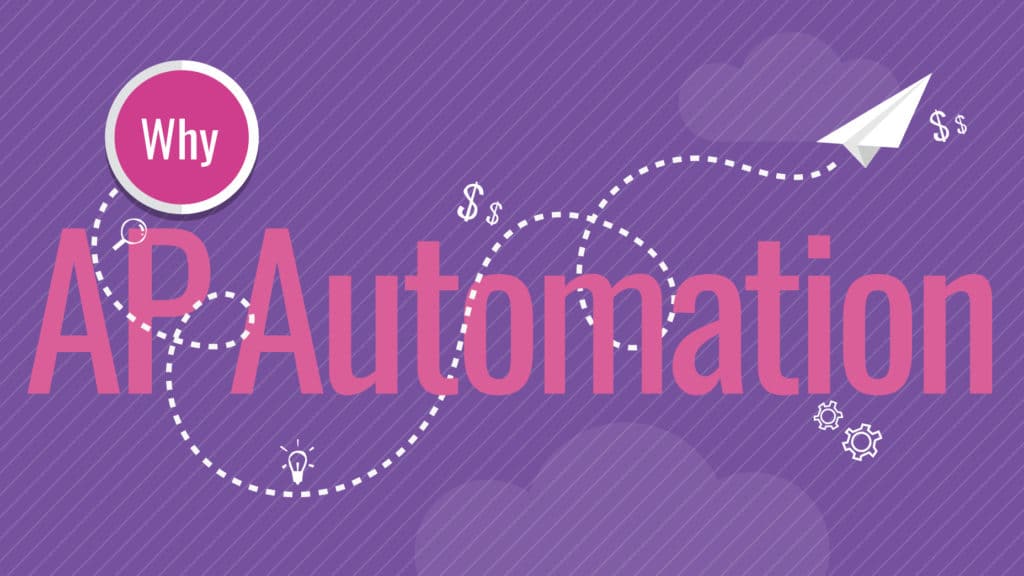
By Ernie Humphrey, CTP, Treasury Webinars
In my last blog, I examined how companies are investing in AP automation. In this blog I will leverage the results of the AP Automation: The How, Why and ROI survey to offer insight into why companies of all sizes across a diversity of industries are investing in AP Automation software.
Top Reasons for Investing in AP Automation
Understanding the why begins with examining specific reasons companies have invested in AP Automation. Our survey results tell us that the top three reasons companies invested in AP Automation software were to solve for:
- Too much paper
- Workflow bottlenecks
- Time spent on non-value added tasks
This suggests the main driver for investing in AP Automation is to improve productivity and the fundamentals of AP, which aligns to how companies are utilizing automation (invoice management, approval workflows, and payments) as revealed in the The How, The Why & The ROI of AP Automation survey report.
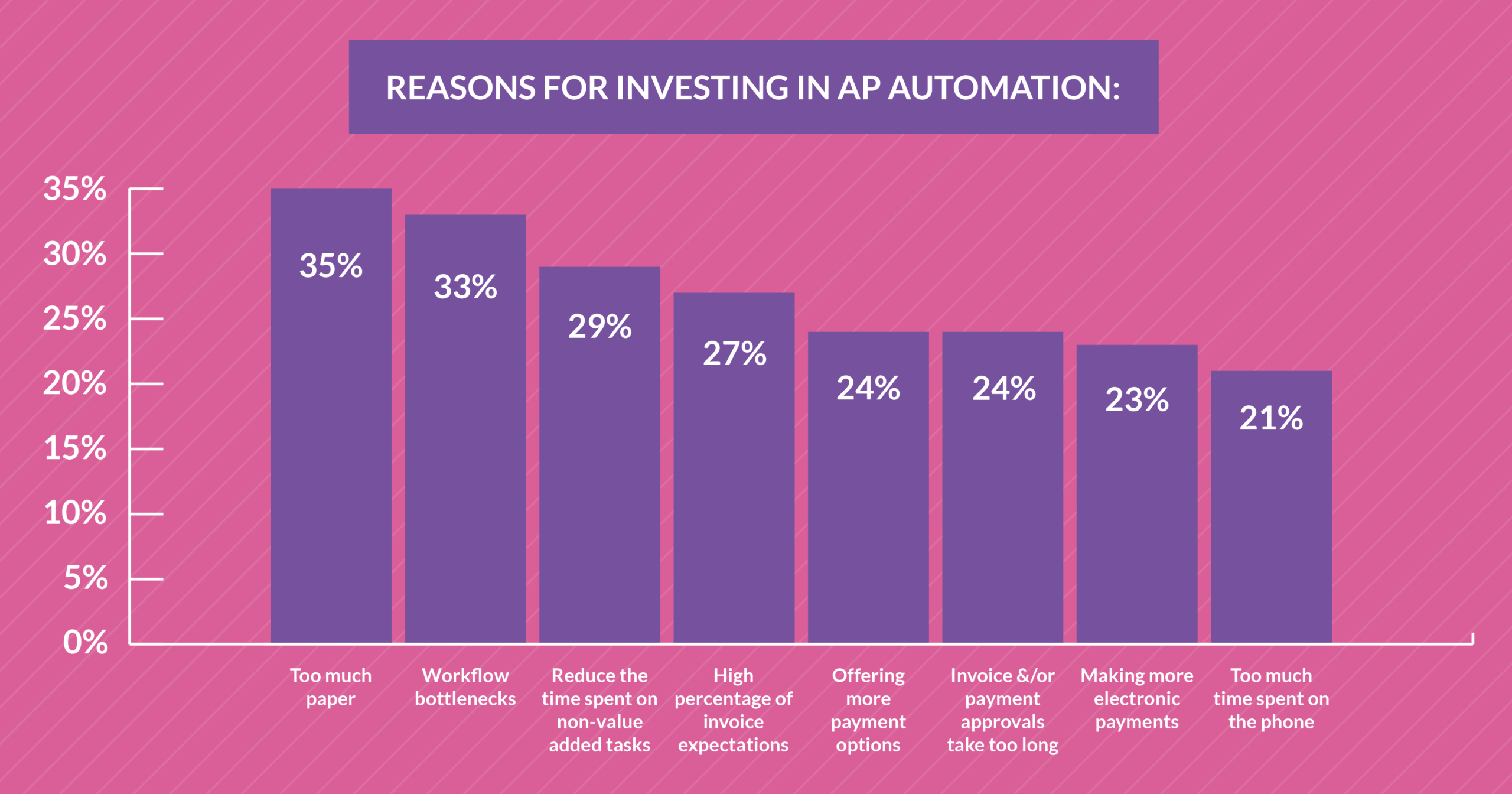
Drivers of AP Automation Investment by Company Size
We also investigated whether the reasons for investing in AP Automation were correlated with company size. The most popular reason for investing in AP Automation for small companies was a lack of visibility into invoice and payment data (32%). For mid-market companies it was too much paper (35%). For enterprise-sized companies it was to reduce time spent by the AP team on non-value add tasks (41%) and too much paper (39%).
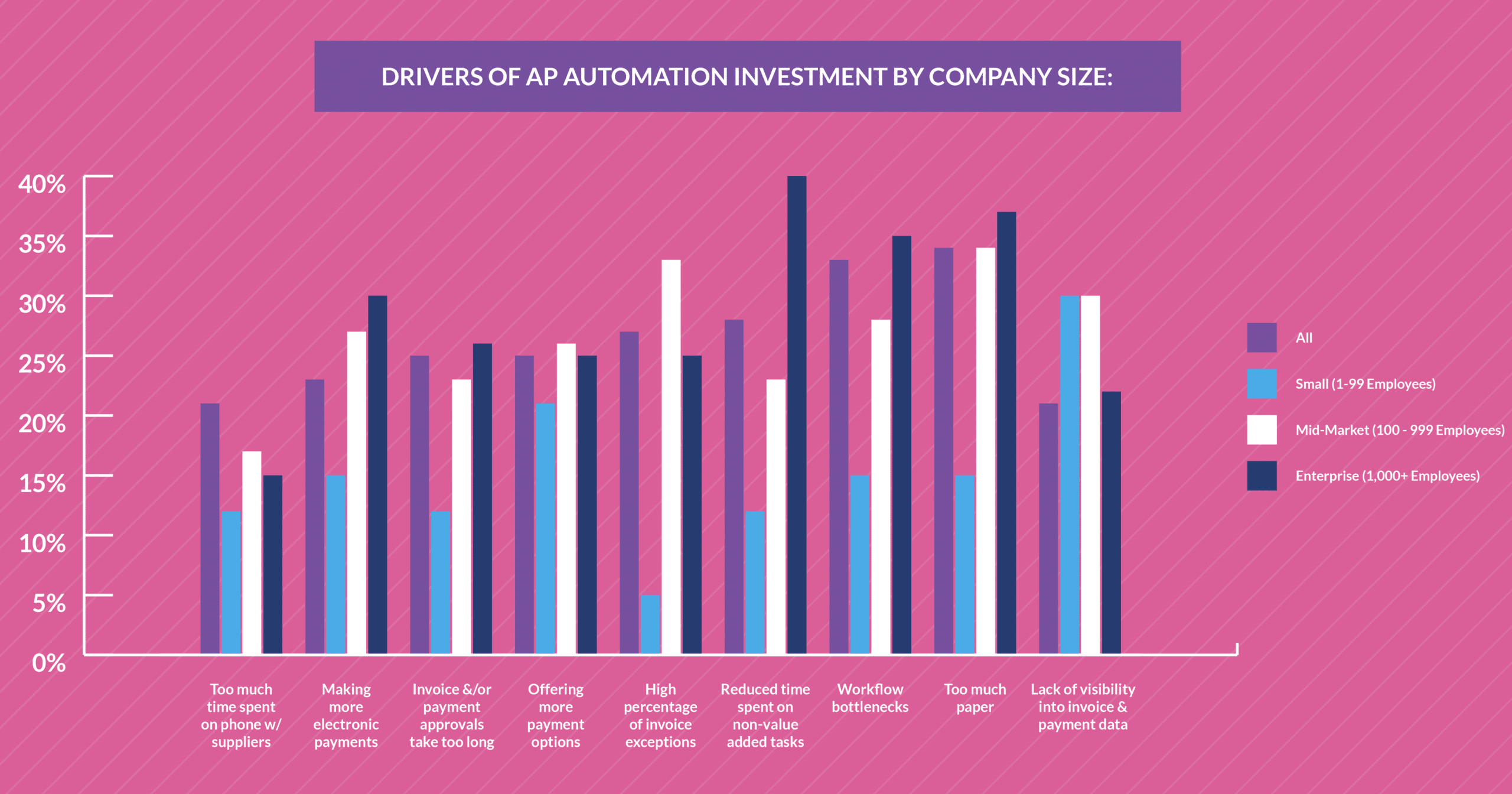
Drivers of P2P Complexity
Additionally, we wanted to better understand the main drivers of P2P complexities within AP Departments. The graph below illustrates the main drivers of P2P complexities, with the top three overall for all company sizes being: multiple entities/subsidiaries (47%), purchase orders (37%), and customized levels of approval (28%). The later two are closely tied to the why companies invested when it comes to too much paper (i.e. purchase orders) and workflow bottlenecks (i.e. customized levels of approval).
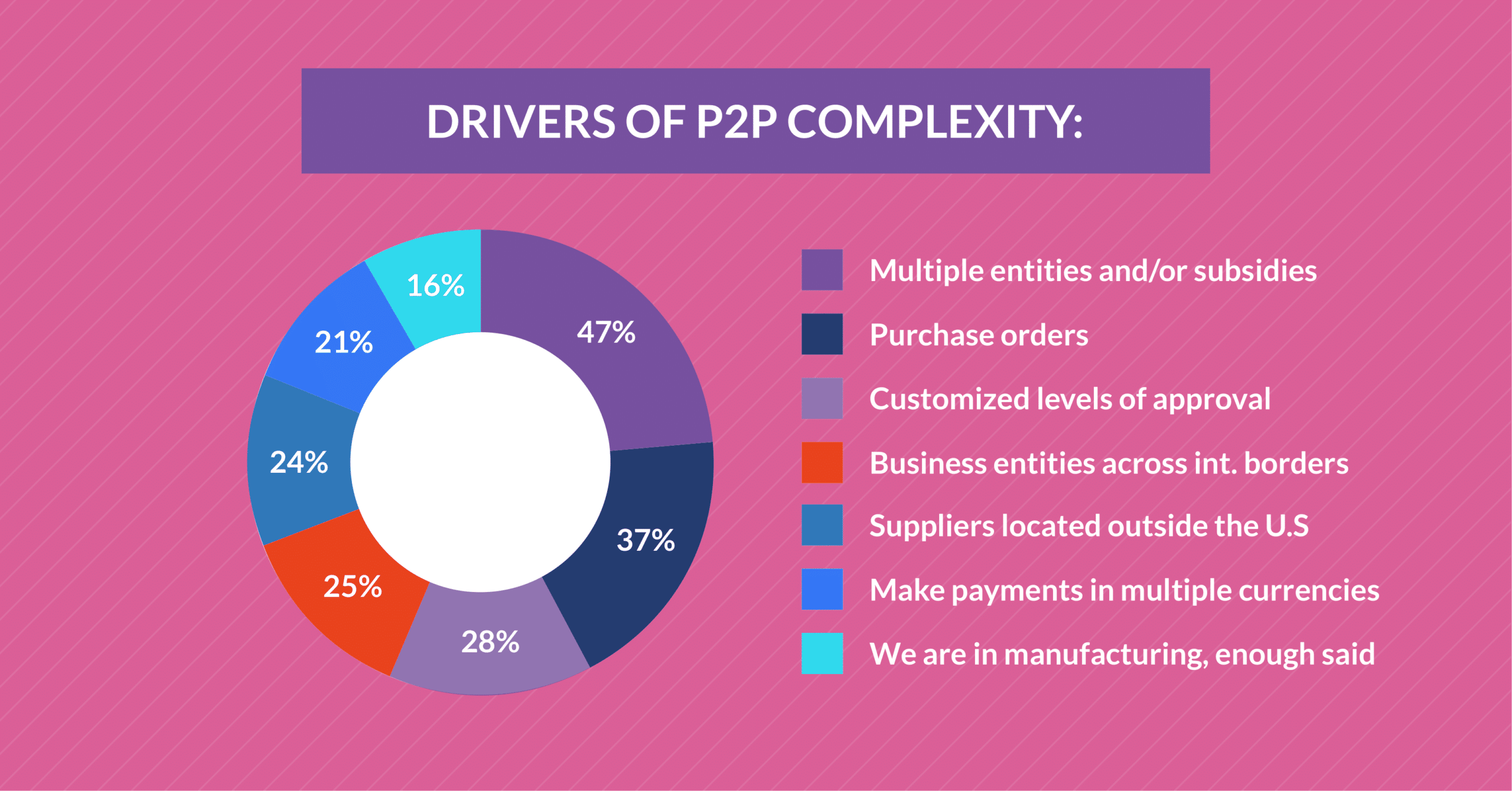
The Why Not of AP Automation
In addition to uncovering why companies decided to invest in AP Automation, we also wanted to understand what might be holding companies back from investing. We asked respondents whose company had not yet invested in an AP Automation solution to share their reasoning.
The biggest non-driver for investing in AP Automation was that their current process works well (44%). This was surprising, taking into account the proven benefit of AP Automation in improving existing AP processes by eliminating inefficient tasks. Then considering the top two reasons why companies invested in AP Automation (i.e. reduced time spent on non-value added tasks & too much paper), might suggest that the biggest non-driver (i.e. our current process works well) is simply a matter of that these companies don’t have enough invoice volume to justify the investment.
Why hasn’t your company invested in AP Automation yet?
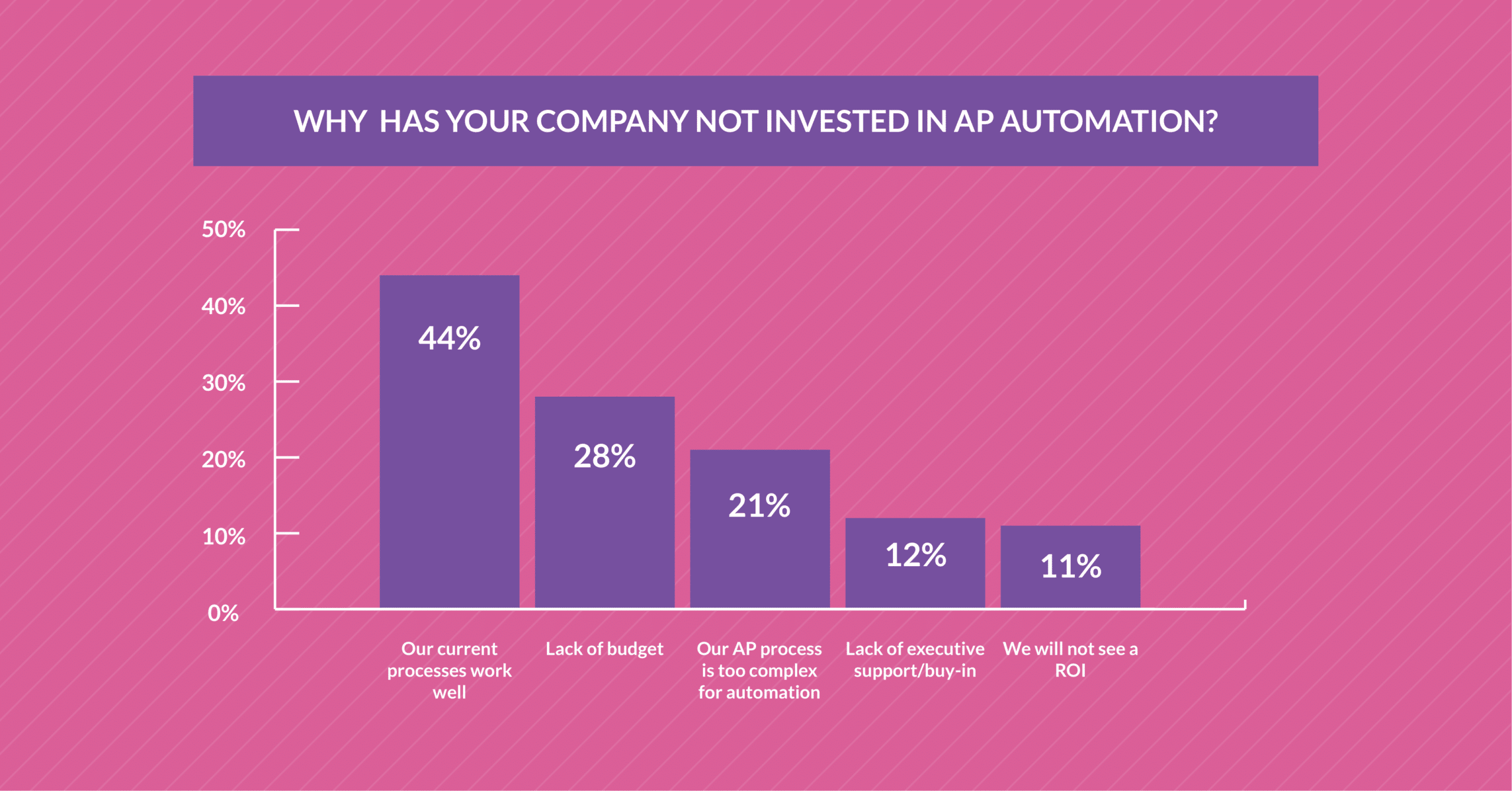
At the end of the day, the reasons for investing (or not investing) in AP Automation will always be unique to a company. But it’s always valuable to be able to take a set of data to uncover trends. If you’d to see more numbers behind The How, The Why, and The ROI of AP Automation, you can download the full survey report here.
In the meantime, also keep an eye out for our next blog which will focus on The ROI of AP automation.